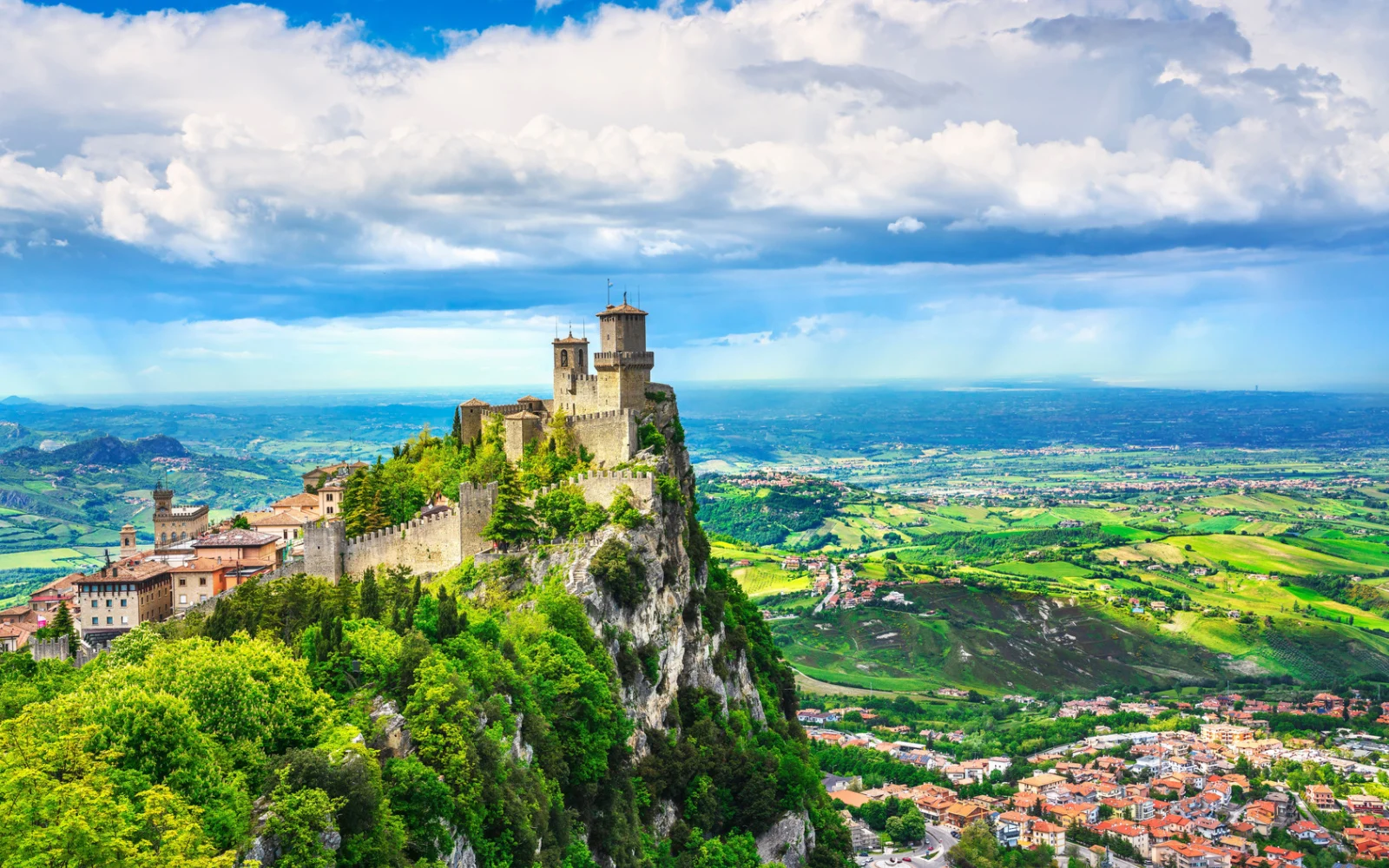What's the best time to visit San Marino?
The best time to visit San Marino is between May and July, when warm, sunny weather sets the perfect stage for outdoor exploration and attending lively festivals.
While July is the peak season with minimal rainfall, May and June offer a more tranquil experience with similar weather conditions. This period strikes a balance between enjoying the cultural vibrancy and avoiding the busiest tourist times.
Learn the best time to visit San Marino, Italy for great weather, affordable hotels, and small crowds in this guide. We’ll also share the worst time to go with travel tips to plan your stay!
The Overall Best Time to Visit San Marino
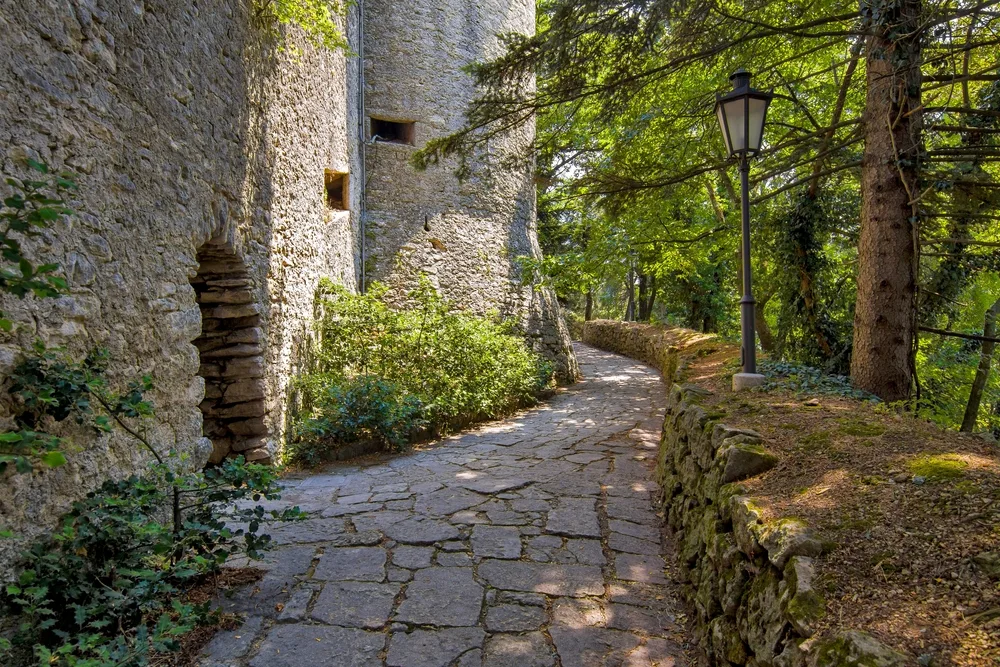
Denis Kabanov/Shutterstock
The best time to visit San Marino is between May and July, when there is warm, sunny weather with little rain. Visiting between the summer months of May and July means you’ll get to take full advantage of the sunny, warm dry season.
The daily highs start around 70°F in May, warming to 78°F in June and 83°F in July. Average temperatures are between 62°F-75°F during these months.
The weather is ideal for walking the cobblestone streets to check out the architecture, heading up Mount Titano, and dining at a street-side café. Open air festivals are also at their peak this time of year, especially during July:
- San Marino World Motorcycle Championship (June)
- Medieval Days Festival (July)
- Adriatic Music Festival (July)
- San Marino Ethnological Festival (July)
- San Marino Jazz Festival (July)
July is the driest month of the year here with only 1.2″ of rain on average. May sees around 1.9″ of rain, while June gets a bit less at 1.7″ on average. That means you’re likely to see a few showers while you’re here, even in July.
But compared to the wetter months of the year – April and September through December – the weather is especially pleasant from May to July.
The country isn’t as popular with tourists as nearby Italy, but things do get more crowded during the peak summer season when most of the annual tourists arrive. Because of the influx of visitors, hotel prices in San Marino rise as the warm weather comes to town.
Here’s a look at the average nightly rates in San Marino from May to July, according to data from Google Hotels:
- May: $53-$141/night
- June: $57-$150/night
- July: $57-$151/night
July is one of the busiest months of the year in San Marino, so while it offers some of the best weather and festival opportunities, consider a May or June visit if you want to go when crowds are smaller.
Cheapest Time to Visit San Marino
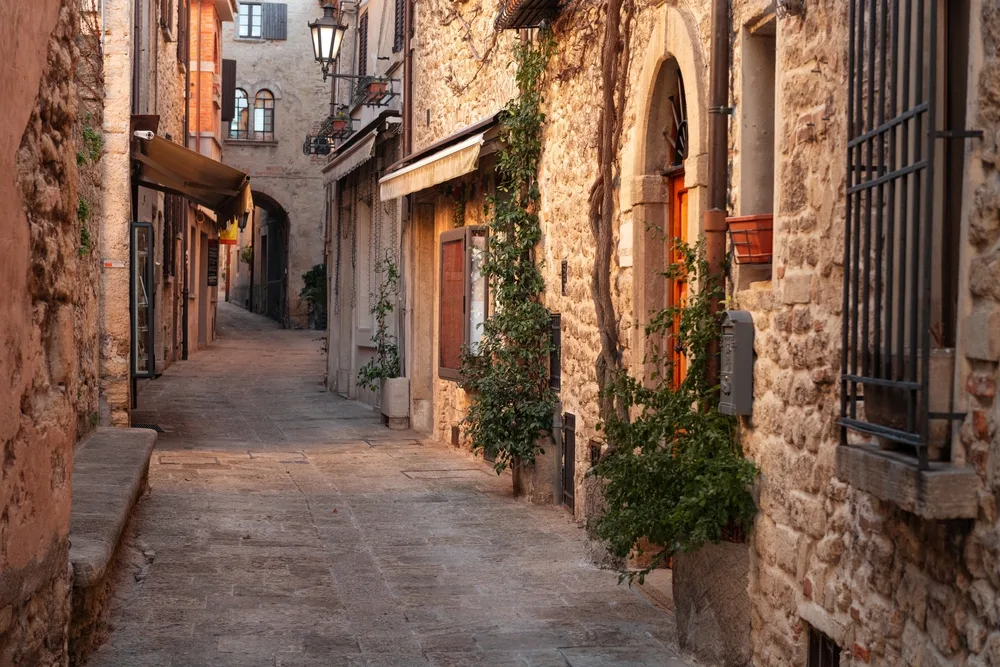
Sean Pavone/Shutterstock
The cheapest time to visit San Marino is from October to March, with hotel prices dropping to their lowest average nightly rate of the year around $51-$135/night.
Between October and March, San Marino gets chilly, rainy, and snowy if conditions are right. It’s one of the reasons this extended period is the cheapest time to visit San Marino.
October and November are the wettest months during this period, but they’re also the warmest of the period with highs from 65°F to 53°F. By December, things start getting much cooler in San Marino with average temperatures around 40°F, then dropping to 38°F in January.
February and March start slowly warming up into the low-to-mid 40s. The chilly temperatures are enough to keep some tourists away, leading to lower prices on hotels in San Marino.
You’ll see anywhere from 2″ (December) to 2.9″ (November) of rainfall during the rainy season in San Marino, which really isn’t bad compared to the wet season in other areas.
Still, the chance of showers and storms can make it hard to plan outings and sightseeing tours around the cities here.
Humidity is highest in December, when totals reach nearly 87% humidity. Snowfall should be on your mind if you plan on going to San Marino during the cheapest time of year, especially between December and January.
The snowy season starts and ends around 0.1″ in November and March. In December, about half an inch of snow will fall, while January sees about 1.1″ of snow. February gets around 0.8″.
While it’s the coldest time of year and there are chances of snow between December and February, some tourists still find this a great time to visit San Marino for sightseeing, holiday festivals, and indoor attractions.
December is actually one of the busiest months of the year in San Marino – a miniature peak season of sorts – due to the influx of visitors around the holidays.
Still, the average hotel price per night is lowest from October to March, as you can see in the average nightly rates:
- October: $53-$132/night
- November: $51-$134/night
- December: $53-$139/night
- January: $52-$137/night
- February: $51-$129/night
- March: $51-$128/night
Be sure to check out the Marvels of Christmas market and fair during the month of December and the first week of January. ‘Christmas of Wonders’, an event with tons of attractions like an elven village, archery booths, and art installations, takes place the first week of December.
Least Busy Time to Visit San Marino
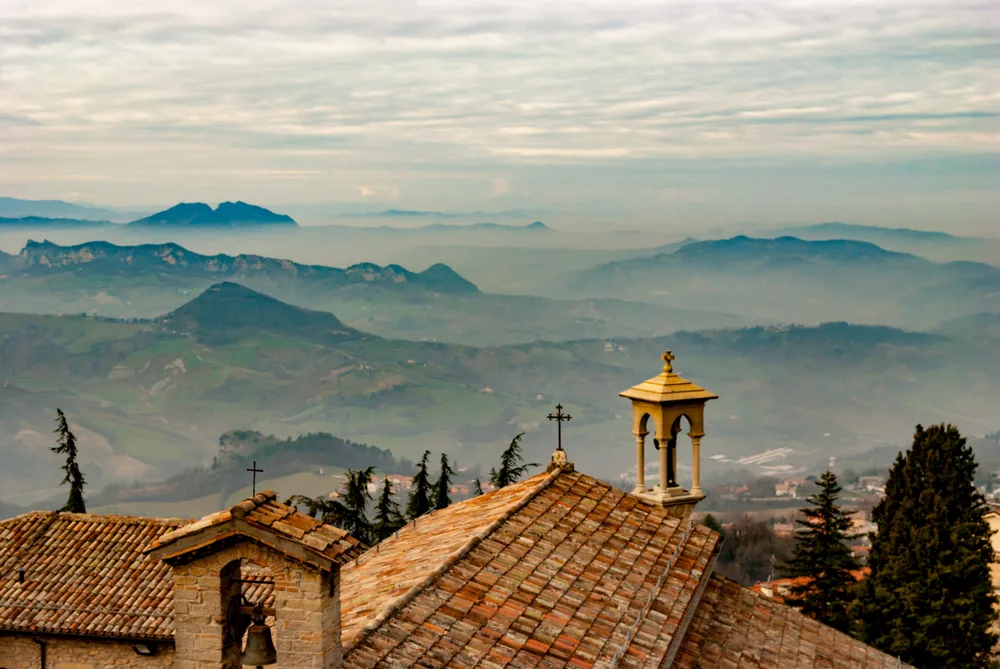
Luca Pattini/Shutterstock
The least busy time to visit San Marino is from August to November, when fewer tourists are arriving. Daily highs range from low 50s to the low 80s and regular rain showers occur during this time.
If you want to escape big crowds and experience San Marino like a local, the best time to come is between August and November. This is when the fewest visitors come to the country.
It’s mostly due to the increased rainfall during this time of year. San Marino’s rainy season begins to pick up in August, when monthly rainfall totals reach 1.5″.
It’s much wetter come September (2.4″) and October (2.7″), but November is the rainiest month of all. With about 2.9″ of precipitation on average in November, this month sees 8-9 rainy days and may require you to create some backup plans if showers begin while you’re out and about.
Be sure to check out the San Marino’s Day festival in September with crossbow competitions, military concerts, fireworks, and flag displays that showcase the nation’s pride.
Since August and September are drier than October and November, you’ll find that more people are in the country during these still-warm months. Still, the crowds are nowhere near the peak summer season or spring shoulder season during August and September.
You’ll find that hotels charge more during the month of August to catch the very end of summer travel:
- August: $71-$187/night
- September: $54-$143/night
- October: $53-$132/night
- November: $51-$134/night
If you’re serious about avoiding crowds and want to feel like you’ve got the place to yourself, save your visit for October or November – but know that it’ll be wetter during this time.
If you’re just looking for a laid-back, less-crowded stay and don’t mind paying slightly more for your room, you’ll enjoy visiting in August or September more.
Worst Time to Visit San Marino
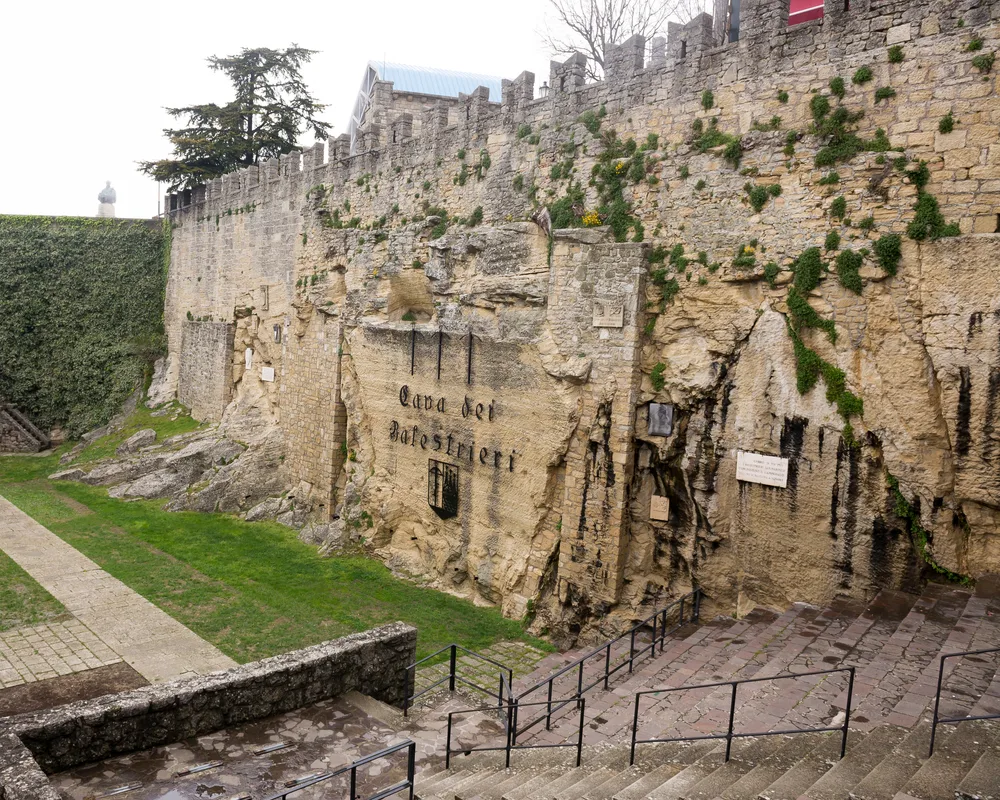
View of Cava San Marino Balestrieri in San Marino, April ’14/Aleks49/Shutterstock
The worst time to visit San Marino is during the peak of the rainy season — October and November — if you’re hoping to spend time sightseeing and enjoying the outdoors.
During October and November, you’ll deal with the most rainfall of the year in San Marino and have fewer opportunities to get out, sightsee, and stroll down the historic cobblestone streets through the cities.
October and November are some of the cheapest and least busy months to go to San Marino, but the tradeoff is the poor weather during this time of year. You’ll see anywhere from 2.7″ to 2.9″ of rain per month in October and November, which translates into 8-9 rainy days per month.
On top of the increased precipitation during this time, the temperatures begin to cool rapidly. Average temperatures are between 48F-58F in the fall. But nighttime lows can be very chilly, reaching into the low 40s with chances of snow at higher elevations.
If you’re after smaller crowds and low prices, it can still be a reasonable time to visit since hotels are much cheaper this time of year:
- October: $53-$132/night
- November: $51-$134/night
Make sure you have plenty of indoor plans and attractions to check out if a sudden downpour interrupts your walking tour of the city or a leisurely “hike” up Mount Titano.
Things to Consider
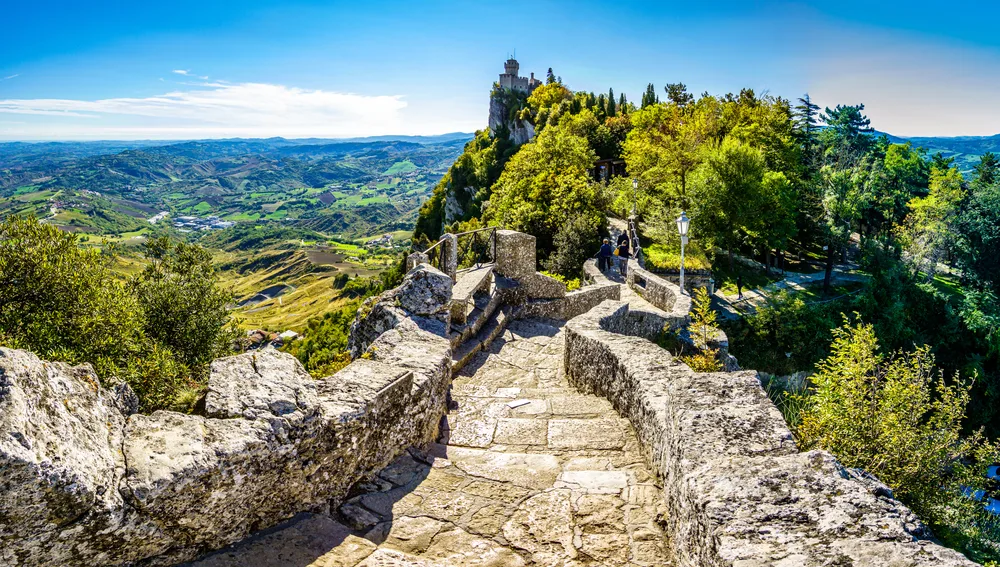
FooTToo/Shutterstock
Visiting San Marino will be more enjoyable when you know what to look for and expect. Here are some of the best travel tips we’ve come across – you might learn something that helps you make the most of your stay!
- There’s no airport here. San Marino is very small and doesn’t have its own airport. Getting to San Marino requires flying into the Federico Fellini International Airport in Italy, then taking a cab into San Marino. It’s about a 30 minute drive from the airport.
- Take a guided tour. Guided and private tours are the best way to experience San Marino without missing any of the good stuff. You can choose from tours of the historic center of the city (Three Towers of San Marino, Piazza della Liberta Square, and the Basilica of San Marino), eBike tours around the city, or farmhouse and vineyard tours that include cooking classes and wine tastings.
- Prepare for hilly terrain. Walking through San Marino can be a challenge in some areas because the terrain is quite hilly and steep. It pays to wear comfortable walking shoes with support and give yourself time to rest after climbing the many stairs and stone steps that lead you up to the higher elevations.
- Do some shopping. San Marino is packed with small shops and boutiques, from sunglasses stores to perfumeries and old-fashioned weapons shops. Sales are common during the winter season, especially in December and January. This trend lines up with the Italian winter “saldi,” or sales, events when items are discounted up to 70% at the end of the season.
- Get out of the tourist areas. The capital city of San Marino is where most of the touristy areas are, especially around the Three Towers of San Marino and the Basilica of San Marino. If you have time, move out into the other nearby towns in the country – Borgo Maggiore, Serravalle, and Domagnano are great – to see more of the true San Marino during your visit.
Frequently Asked Questions
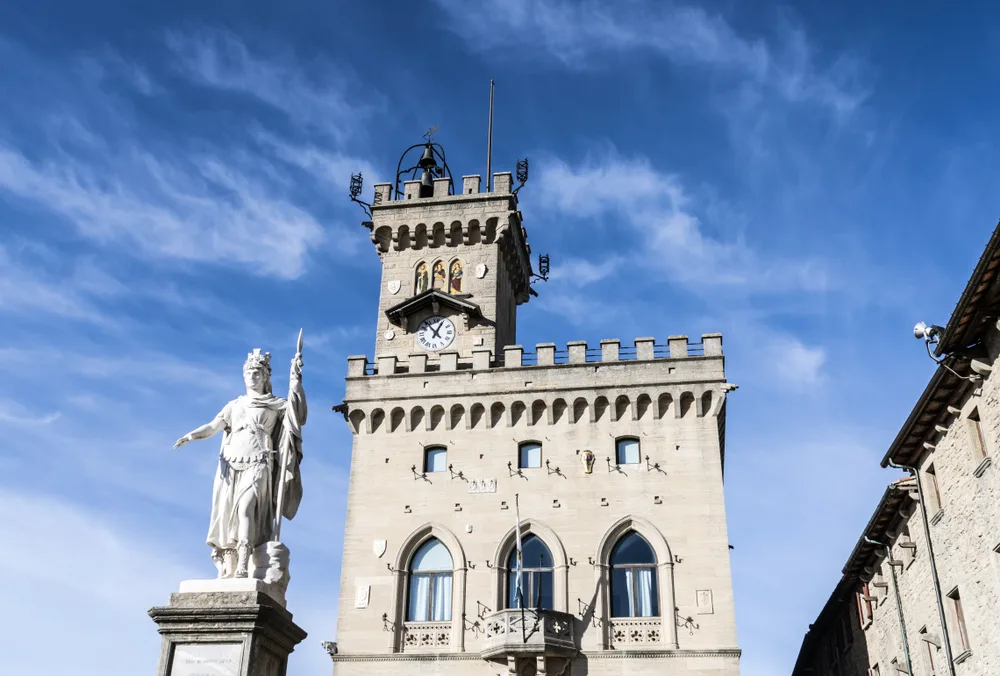
Olenar123/Shutterstock
Wondering how long your visit should be, where you should stay, or how much it costs to go during the best time to visit San Marino? Take a look at the most frequently asked questions below to learn more:
When is the best time to visit San Marino for good weather?
The best weather in San Marino is from May to September, with temperatures typically ranging from 68°F to 86°F (20°C to 30°C). This period offers warm, sunny days ideal for sightseeing and enjoying the breathtaking views from Mount Titano.
Is summer a good season to visit San Marino?
Yes, summer (June to August) is a great time to visit San Marino. The weather is at its warmest, making it suitable for outdoor activities and enjoying the stunning views from Mount Titano. However, it's also the peak tourist season, so expect more crowds and higher accommodation prices.
What is the best time to visit San Marino for fewer crowds?
Late spring (April to May) and early autumn (September to October) are the best times to visit San Marino if you want to avoid crowds. The weather is still pleasant, and you'll find fewer tourists, which makes for a more relaxed experience. These periods are ideal for leisurely exploring the historic sites and enjoying the local culture.
Is winter a good time to visit San Marino?
Winter in San Marino, from December to February, can be quite cold, with occasional snowfall. While it's not the best time for outdoor activities, it offers a unique experience with fewer tourists and a chance to see the historic city covered in snow. It's also a good time for enjoying local winter cuisine and attending festive events.
So, What’s the Best Time to Visit San Marino?
San Marino’s beauty is best appreciated during the peak summer season, from May to July. The weather is warm, dry, and ideal for sightseeing around the capital and more rural areas.
From the architecture and scenic views to the mild climate and unique history, there’s something special about San Marino that makes it one of our favorite “hidden gems” in Europe – and it could be yours, too. Happy travels!



